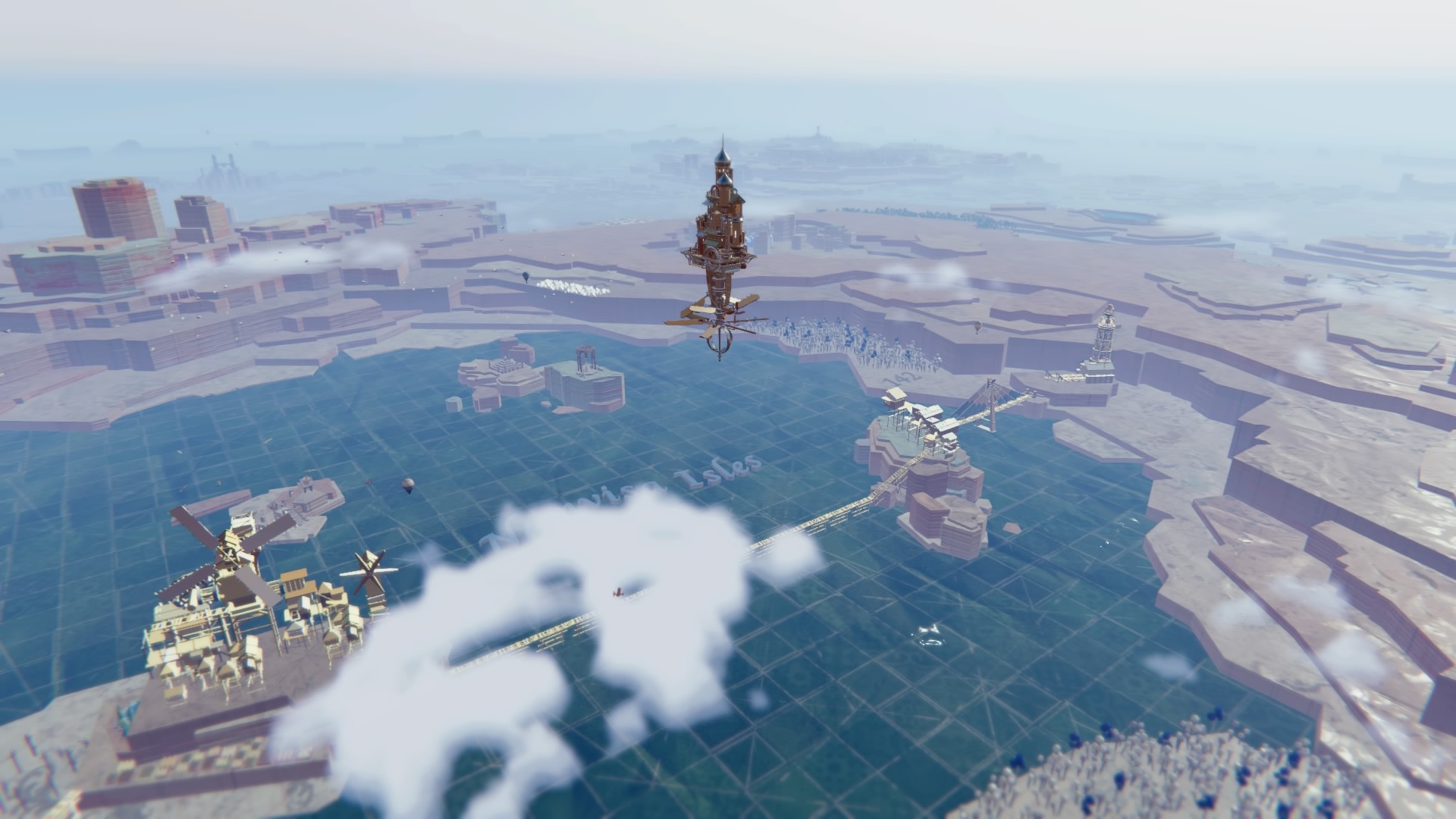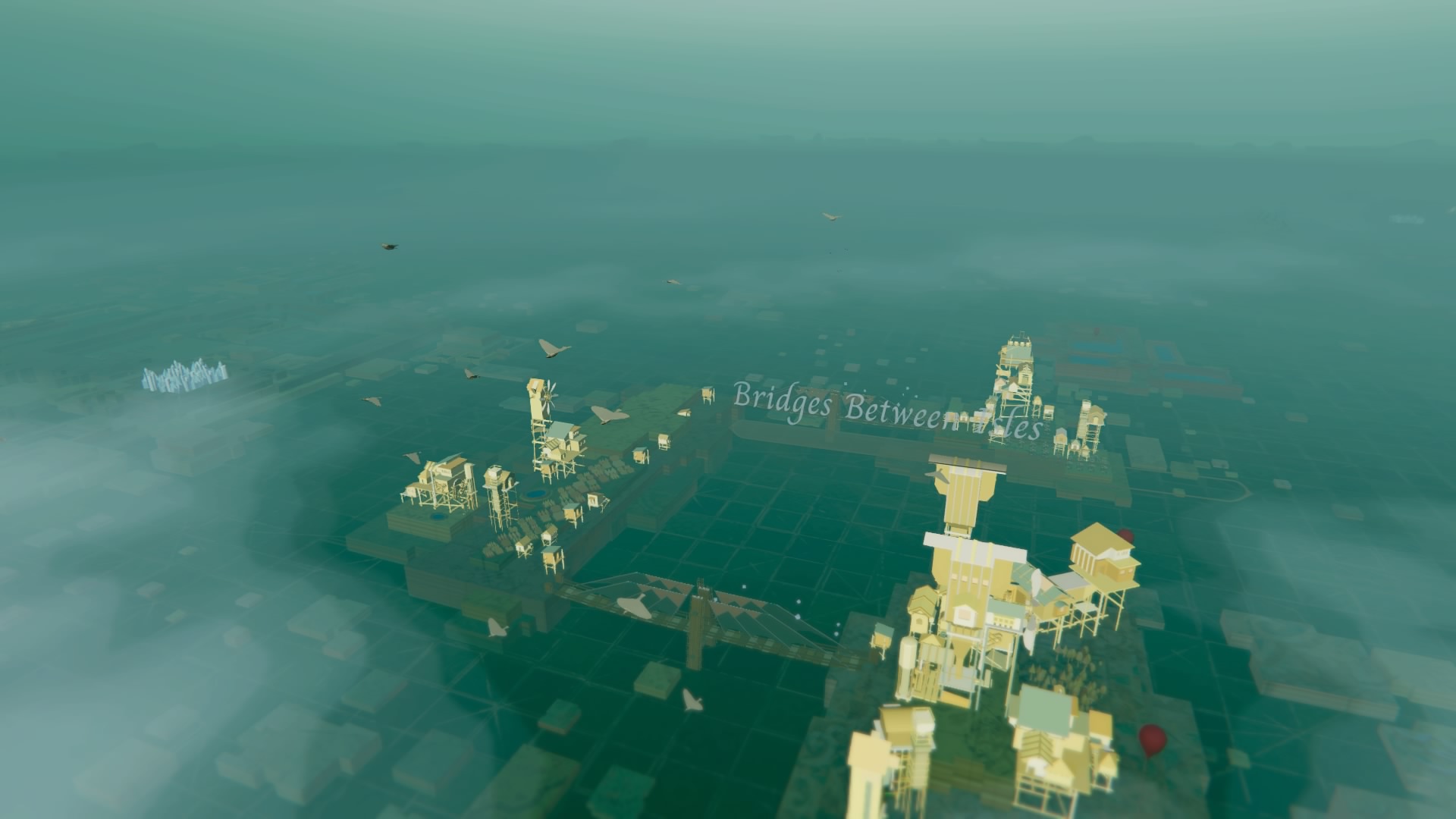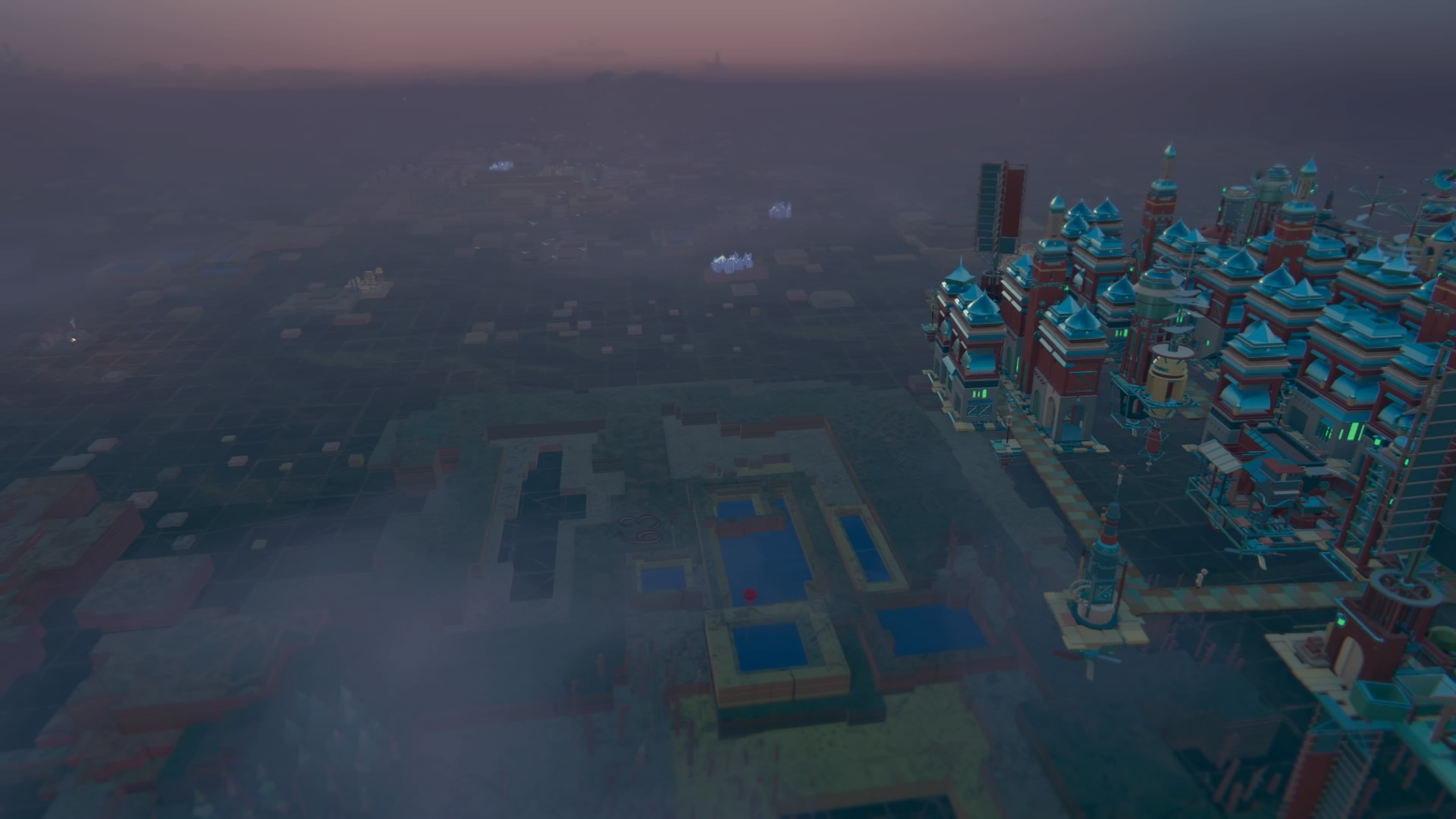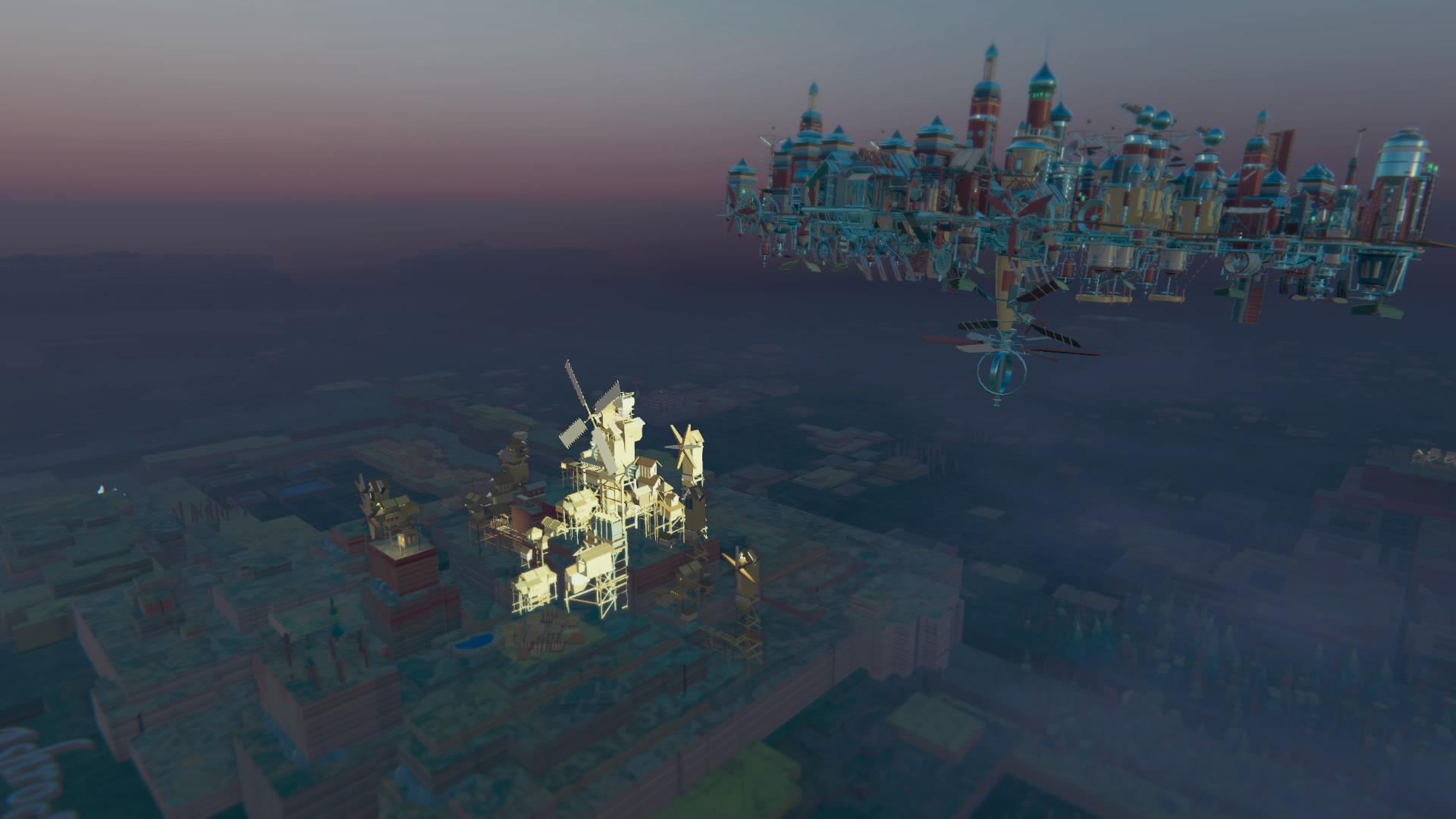I’ve always struggled with city builders as a genre. I never get more than a few hours in before my whole infrastructure falls apart, and I decide to give up. They can be complicated, with a multitude of menus and tech trees, along with long and dull tutorials. Like grand strategy games, they can be difficult to break into as a newcomer. However, Airborne Kingdom shirks the conventional hardcore experience and creates an approachable and unique spin on the genre, translating the experience to PS4 with excellence.

“Airborne Kingdom has unique buildings and mechanics which set it apart from the rest of the genre. ”
In Airborne Kingdom, you play as a group of villagers on a quest to fulfil a prophecy to ascend to the heavens and unite the disparate kingdoms of your world. You must travel across barren desert landscapes, marshy wetlands, and through snowy peaks and mountain ranges. The different biomes are not purely visually distinct but also present unique resource-driven challenges. Later biomes lack certain vital resources like coal in the wetlands or food in the mountains. Along the way, you will collect pieces of a tapestry that reveals the secrets to ascend.
To gather these pieces, you complete quests for foreign kingdoms, like repairing old technology, rescuing abandoned colonies, and more. In addition to these quests, you must gather 150 citizens to join you on your journey, who are recruited in villages and are given after completing a kingdom’s various quests. But while these goals take your flying city around the map, the challenge is keeping the whole operation running.

From your floating town centre, you build paths outward to construct your typical buildings for the genre. There are homes, research facilities, farms, light posts, hangers for resource gathering, storage houses, different refineries to make specialized resources, and structures for entertainment and to please citizens. Aside from the obvious examples, Airborne Kingdom has unique buildings and mechanics which set it apart from the rest of the genre.
“The game offers you various ways to keep growing your city throughout a playthrough.”
While having enough necessary resources like coal for power, food, and water is a must, maintaining lift, decent propulsion, and keeping tilt to a minimum is just as important. As you build more, the heavier your floating city becomes. This slows your city down and, at a certain threshold, requires a new structure to generate more lift. If you are not careful in your building placement, it can throw off the balance of the city, tilting it toward the heaviest axis and displeasing citizens.

To alleviate these concerns, Airborne Kingdom often becomes a balancing act. You build lift machines to support new buildings and heavier loads. At the same time, careful city planning is necessary to ensure minimum tilt, and propulsion devices like propellers keep your speed up and make travel more resource-efficient. Combined with multiple technologies to solve each issue, the game offers you various ways to keep growing your city throughout a playthrough.
“Airborne Kingdom’s interconnectivity makes even small decisions engaging.”
Constructing a flying city is not only aesthetically stunning but also mechanically intriguing. The game adds these ideas on top of more traditional resource management, creating moments of tension, and keeping stakes high. Recruiting new villagers might raise your labour force, but housing and resource costs might outweigh their benefits. Not only that but do you have enough amenities to keep them happy?
Additionally, the developer, The Wandering Band, throws even more interesting questions into the formula. You might want to build farms to permanently increase food stores, but this requires heavy water condensers to alleviate the increased water usage. Farms can also have windmills to increase production and improve the satisfaction of nearby citizens.

A simple building has you making several judgments just to construct one building. The question becomes where can I place these buildings to maximize their benefits while keeping in mind tilt and the decreased speed from the extra weight. This interconnectivity makes even small decisions engaging.
“Airborne Kingdom introduces mechanics organically over time.”
Each decision becomes an intricate Jenga puzzle. But while thinking through every decision might prevent moments of crisis, the game remains lenient and makes room for your mistakes. It offers more thoughtful planning to players at a higher skill level, while never requiring anything near perfection or mastery.
While many strategy games obscure the purpose of decisions through lengthy tutorials and obtuse mechanics, Airborne Kingdom introduces mechanics organically over time. Through its quests and villager demands, it guides you through the tech trees and nudges you into building important structures. Although, it isn’t perfect with villager requests often remaining too vague and unclear.

But when this hidden tutorial system works, it works seamlessly. A kingdom might need an adobe which requires an adobe smith, leading you research and later build it. But that smith needs villagers to run it, meaning you might need to conserve more coal and food for the new villagers, guiding you to improve houses in the tech tree, and so on. Each decision brings up a new problem to solve and slowly unveils the purpose and use of each building and technology as you need it.
“Compared to more complex games of the genre, it keeps things relatively simple.”
While to newcomers and novices to genre Airborne Kingdom offers more than enough challenges, veterans might not find its systems compelling. Compared to more complex games of the genre, Airborne Kingdom keeps things relatively simple and lacks more intense emergent gameplay. Playthroughs range from 10 to 20 hours, with a randomized map on each playthrough. A sandbox and a new game plus mode also are included. Aside from the flying mechanics, the game is fairly standard with the added premise of nomadic living as you gather resources and complete quests.
There’s a lot to love in the Airborne Kingdom, and aside from some very small text and UI elements, the team crafted a decent PS4 port. Placing buildings and paths is simple and feels good on a controller, and performance was great overall, with few frame drops until the very end of the game. It is a welcoming city-builder that guides you through its quests to understand its systems piece by piece while still allowing for intriguing decision-making.
Check out Airborne Kingdom for PS4 here and PC here.
*Disclaimer: Previewed on PS4, code was provided by the Publisher.







